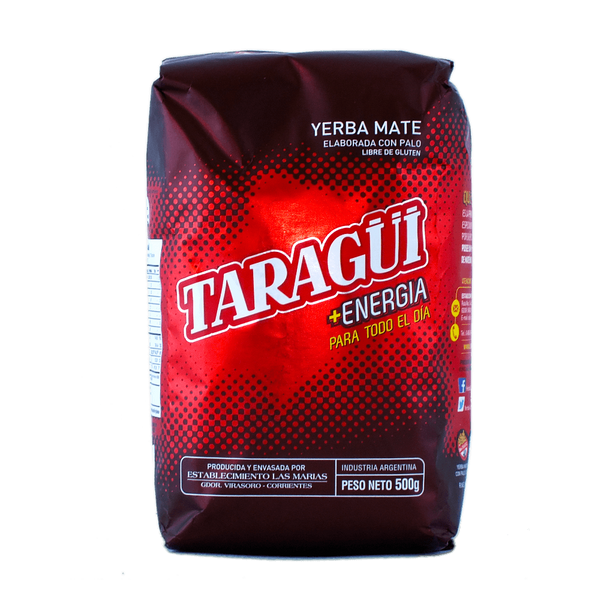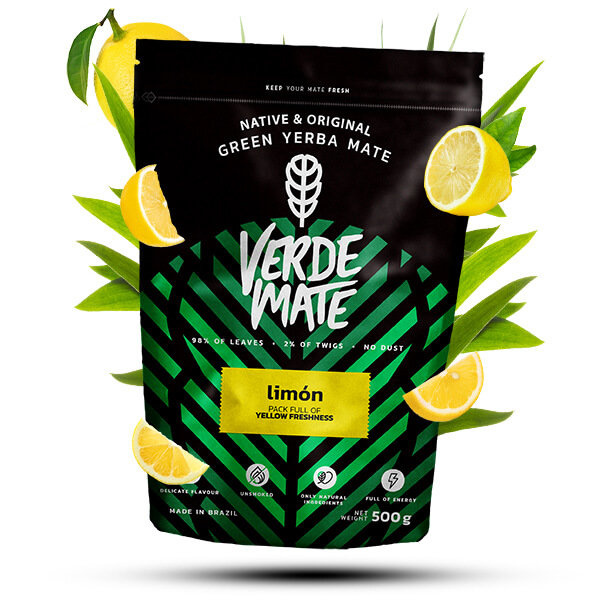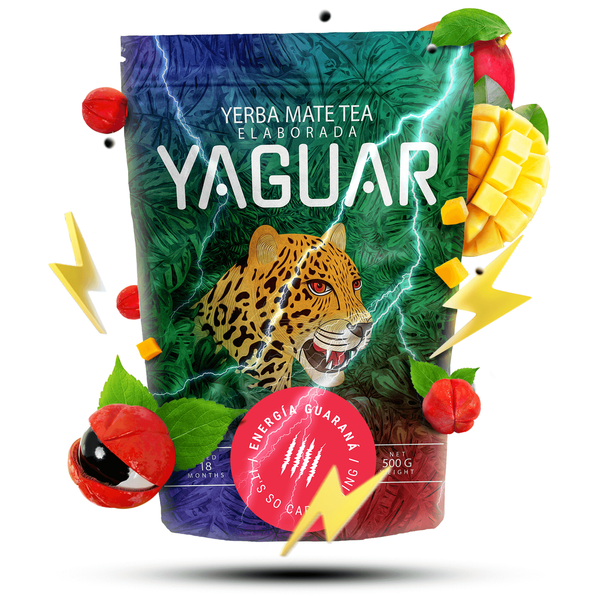Catuaba - natural aphrodisiac

"Catuaba” is the name of infusion made from the bark of several trees native to Brazil. The most commonly used is the bark of the trees botanically named Trichilia catigua and Erythroxylum vaccinifolium. Bark of these trees, as well as the trees themselves, are also called “catuaba”. Due to its valuable properties, catuaba tree bark is often added to yerba mate. Today we will try to comprehensively gather all the information about this fantastic ingredient.
Summary:
- What is catuaba? What is its origin?
- Catuaba or katuaba?
- Catuaba - effects and properties
- Catuaba - side effects
- Which products with catuaba bark to choose?
What is catuaba? What is its origin?
As we mentioned at the beginning, catuaba is an infusion made from the bark of several species of trees that grow in the tropical forests of South America and, above all, in Brazil. Locally, there are also other synonyms used like: Chuchuhuasha, Tatuaba, Pau de Reposta, Piratancara and Caramuru. Among the plants whose bark is used to prepare the infusion are trees from the Anemopaegma, Ilex, Micropholis, Phyllanthus, Secondatia, Tetragastris and Myrtaceae species and families. The most common ingredients in the infusion include the bark of the trees Trichilia catigua and Erythroxylum vaccinifolium, which is why, for short, the bark of just these trees, as well as the trees themselves, are also referred to as “catuaba”. These two plants are evergreen trees, growing to a height of around maximum 3-6 metres. Trichilia catigua is characterised by a very dense crown and strongly glossy leaves, dark green in colour. The leaves of the Erythroxylum vaccinifolium tree are smaller and more irregularly shaped. The bark taken from the catuaba trees is crushed so that it can easily be made into an infusion or added to tea, yerba mate or herbs, in which it releases its valuable properties.
Catuaba or katuaba?
When searching for information on catuaba, or looking at the labels of yerba mate with this ingredient, you can find an ingredient with a very similar term - “katuaba”. Although it shows the same properties as catuaba (bark), katuaba is actually something different. This is the term for a small plant with the Latin name Psidium cinereum, which comes from the myrtle family (Myrtaceae). It is only found in Brazil and indeed, like catuaba, is a common ingredient in yerba mate blends, but the dried parts of this plant are used, not the bark.
Catuaba - effects and properties
Chemical compounds contained in catuaba
Catuaba bark contains a group of three alkaloids called catuabine. There are tannins also, which contribute to the slightly bitter taste, and saponins, which are responsible for the gentle foaming of the infusion made with this ingredient. Also found in catuaba are flavonoids, which exhibit antioxidant and anti-inflammatory effects, phytosterols, which act similarly to sex steroids, and numerous essential oils.
Properties and effects
Catuaba has been used for centuries by the indigenous people of South America in natural medicine. It gained popularity thanks to its effect on potency. There is a reason why catuaba trees are called “potency trees”. In South America, a humorous saying is also famous: "until the age of 60, the children belong to the father; after the age of 60, they belong to the catuaba", meaning so much that a father who begat children after the age of 60 had to support himself with catuaba. The bark, prepared as an infusion or added to yerba mate, tea or herbs, is used as an aphrodisiac, which is credited with improving sexual life, comparing its power to synthetic viagra. It improves libido, adds vigour and energy. Catuaba regulates muscle tension and influences the proper functioning of the nervous system. It alleviates stress and has a positive effect on mood. Based on studies, catuaba has also been shown to have an antidepressant effect. It has anti-inflammatory and analgesic effects. In 1992, a study was conducted on mice. Based on the research, catuaba was found to have an effect on the prevention of fatal bacterial infections and HIV infection. However, it is important to note that, so far, scientists have not yet thoroughly studied the properties of catuaba tree bark.
Catuaba - how to make an infusion?
Encouraged by the miraculous properties of catuaba, are you wondering how to brew it? The catuaba bark can be prepared as a stand-alone infusion. Pour 5 grams of crushed bark over 250 ml of water and boil for 5 minutes over low heat. Once boiling, the brew should be set aside for 15 minutes and then strained. Another way is to add it to tea or yerba mate or buy a ready-made product with catuaba added. The brewing is then very simple - you prepare the infusion just the way you like it.

Catuaba side effects
Catuaba is a natural product, so its use has no adverse side effects. No studies have so far shown any negative effects of catuaba on the human body either. However, you have to be careful not to overdo it with the amount. It is recommended that an infusion of catuaba be used only by adults. Sensitive people and those taking various types of medication are advised to consult a doctor or pharmacist before using catuaba. Contraindications include its use by breastfeeding or pregnant women. It affects the libido and has a stimulating effect, which can cause uterine contractions and eventually lead to miscarriage.
Which products with catuaba bark to choose?
In our shop we have quite a large selection of yerba mate with the addition of catuaba (or katuaba). For beginners, we recommend two blends of Brazilian green yerba mate with herbs from Verde Mate Green brand: Katuava - with catuaba bark, herbs and natural aromas of exotic fruits, and La Potente - with natural raspberry flavour. Both of them additionally contain the bark of the muira puama tree, which, like the catuaba, is called the “tree of potency” in South America due to its properties. For lovers of fruit flavours, we recommend an enticing offering from Brazilian brand Yaguar - Amore. As in the mate from Verde Mate, the catuaba here is accompanied by muira puama bark, plus sweet strawberry fruit, aromatic rose petals and fruity flavours. Fans of strong, dusty Paraguayan mate tea can try Guarani Katuava, where the focus is on the natural flavour of the yerba mate and herbal additives, without unnecessary flavourings. Fede Rico Katuava, on the other hand, is an all-organic offering from a Paraguayan producer, where katuaba (the plant, not the bark) makes up as much as 15% of the composition. When it comes to Paraguayan yerba mate with the addition of catuaba bark or dried katuaba leaves, we also recommend taking a look at these offerings: Selecta Katuava, Campesino Katuava con Ginseng, Kurupi Katuava Especial, Colon Moringa-Katuava-Burrito and Indega Kuña Guapa.
Source of information:
- R. Longhini, A. A. S. G. Lonni, A. L. Sereia, L. M. Krzyzaniak, G. C. Lopes, J. C. P. de Mello, Trichilia catigua: therapeutic and cosmetic values, w: Revista Brasileira de Farmacognosia, vol. 27, 2017, s. 254-271. Link
- N. O. Martins, I. M. de Brito, S. S. O. Araújo, G. Negri, E. de Araújo Carlini, F. R. Mendes, Antioxidant, anticholinesterase and antifatigue effects of Trichilia catigua (catuaba), w: BMC Complementary and Alternative Medicine 18, nr 172, 2018. Link
- Global Biodiversity Information Facility: Trichilia catigua A.Juss
- Useful Tropical Plants Database: Trichilia catigua
- Wikipedia: https://en.wikipedia.org/wiki/Catuaba, https://en.wikipedia.org/wiki/Trichilia_catigua, https://en.wikipedia.org/wiki/Erythroxylum_vaccinifolium, https://en.wikipedia.org/wiki/Psidium_cinereum
Recommended




